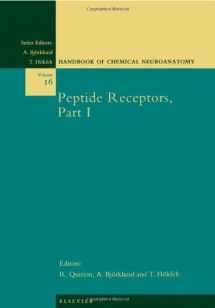
Peptide Receptors, Part I (Volume 16) (Handbook of Chemical Neuroanatomy, Volume 16)
ISBN-13:
9780444829726
ISBN-10:
0444829725
Edition:
1
Author:
A. Bjorklund, T. Hokfelt, P. Quinton
Publication date:
2000
Publisher:
Elsevier Science
Format:
Hardcover
462 pages
Category:
Biochemistry
,
Chemistry
,
Biology
,
Biological Sciences
,
Pharmacology
,
Physical
,
Anthropology
FREE US shipping
Book details
ISBN-13:
9780444829726
ISBN-10:
0444829725
Edition:
1
Author:
A. Bjorklund, T. Hokfelt, P. Quinton
Publication date:
2000
Publisher:
Elsevier Science
Format:
Hardcover
462 pages
Category:
Biochemistry
,
Chemistry
,
Biology
,
Biological Sciences
,
Pharmacology
,
Physical
,
Anthropology
Summary
Peptide Receptors, Part I (Volume 16) (Handbook of Chemical Neuroanatomy, Volume 16) (ISBN-13: 9780444829726 and ISBN-10: 0444829725), written by authors
A. Bjorklund, T. Hokfelt, P. Quinton, was published by Elsevier Science in 2000.
With an overall rating of 3.5 stars, it's a notable title among other
Biochemistry
(Chemistry, Biology, Biological Sciences, Pharmacology, Physical, Anthropology) books. You can easily purchase or rent Peptide Receptors, Part I (Volume 16) (Handbook of Chemical Neuroanatomy, Volume 16) (Hardcover) from BooksRun,
along with many other new and used
Biochemistry
books
and textbooks.
And, if you're looking to sell your copy, our current buyback offer is $0.3.
Description
During the last few years, the pace of research in the field of neuropeptide receptors has increased steadily: new neuropeptides were discovered, and the classification of receptor subtypes has been refined. It thus appeared essential to update the information. Peptide Receptors Part I summarizes current knowledge on ten distinct peptide families. This volume integrates photomontages and maps of quantitative receptor autoradiography, in situ hybridization histochemistry, and immunocytochemistry images. Application of these classical techniques and of new approaches such as transgenic and knock-out animals has revealed a distinct species and tissue specific variation in receptor subtypes expression and pharmacology in the mammalian central nervous system. The functional role of neuropeptides and their receptors in the CNS has been investigated thanks to the development of potent and selective receptor antagonists and agonists. The development of specific neuropeptide-related molecules will help to get a better understanding of receptor subtype physiology and neuronal distribution and may lead to innovative treatments in a variety of brain disorders.


We would LOVE it if you could help us and other readers by reviewing the book
Book review

Congratulations! We have received your book review.
{user}
{createdAt}
by {truncated_author}


